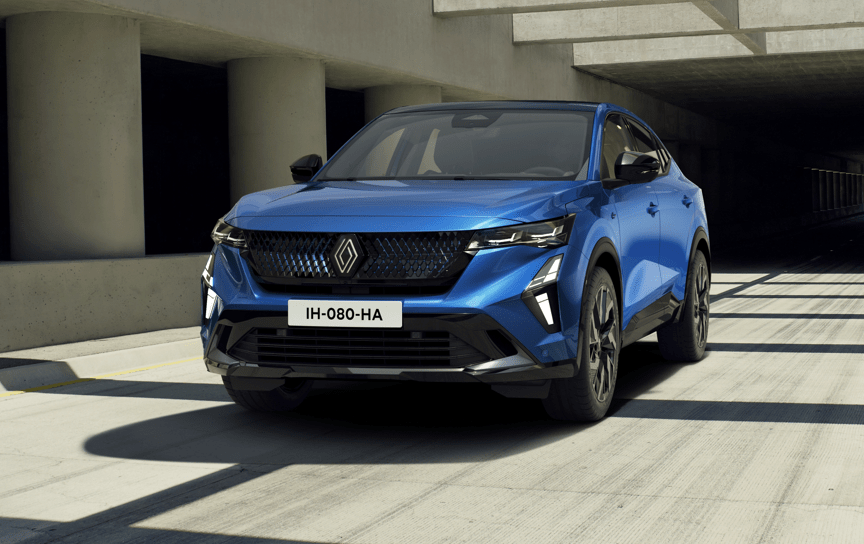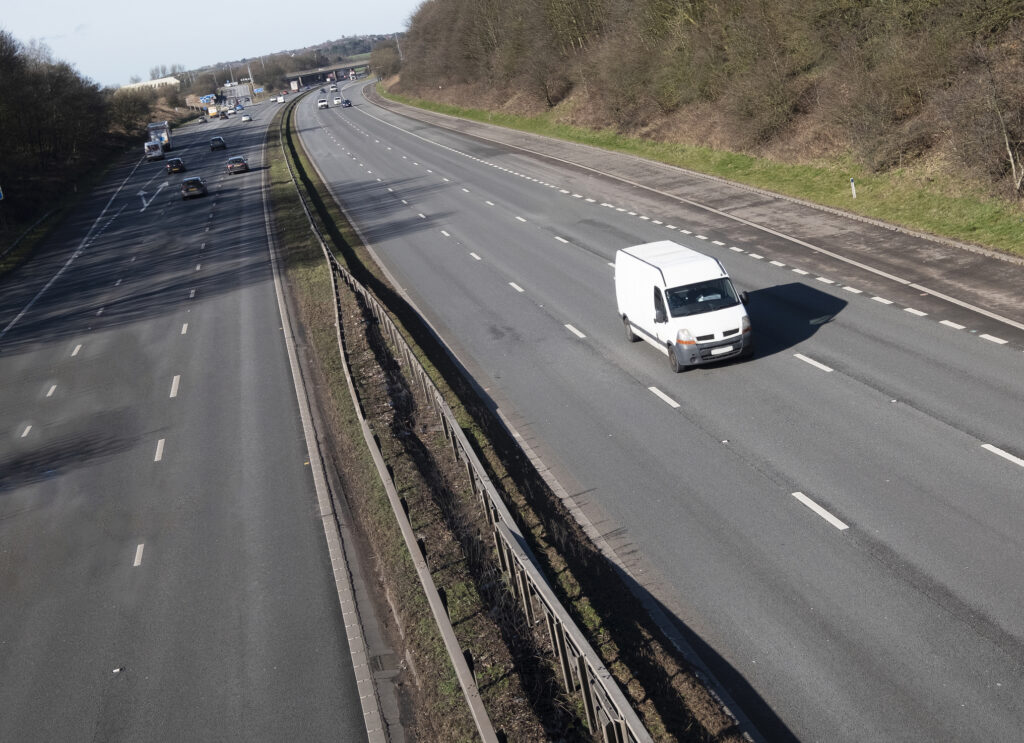UK LCV registrations return to growth as used stock builds
11 September 2024

Registrations of light-commercial vehicles (LCVs) grew in the UK during August. Meanwhile, the used market saw no shortage of stock at auction. Andy Picton, chief commercial vehicle editor at Glass’s reviews the data with Autovista24 editor Tom Geggus.
Following two months of decline, the UK’s LCV market returned to growth in August. Registrations climbed by 1.7% year on year with 16,575 new vehicles hitting the road.
This was the highest August total since 2021 when 20,582 LCVs were delivered. A total of 218,884 LCVs were registered in the year to date. This was a 2.7% increase on 213,219 units registered at the same point last year.
Demand for LCVs proved positive across all sectors except pickups where demand fell 2.5% according to data from the Society of Motor Manufacturers and Traders (SMMT).
Vans weighing between 2.5 and 3.5 tonnes gross-vehicle weight (GVW) remained the most popular segment. Demand rose by 1.8% year on year, reaching a total of 11,753 units, accounting for 70.9% of registrations.
Vans below 2 tonnes GVW recorded a 24.5% increase in deliveries, up to 427 units. Vans between 2 and 2.5 tonnes GVW saw registrations increase by 1.9% to 2,771 units.
Transit tops charts
Ford topped the registration ranking in August. The Transit Custom claimed the top spot, while the Transit came third and the Ranger fifth.
The Mercedes-Benz Sprinter came second, while Stellantis saw the Vauxhall Vivaro finish Fourth. Then came the Vauxhall Movano in eighth (590 units), the Peugeot Partner ninth (556 units) and the Vauxhall Combo in 10th (545 units).
The remaining top-ten spots were claimed by the Renault Trafic in sixth with 630 units and the Volkswagen Transporter in seventh with 593 units.
Third successive month of decline
Registrations of all-electric LCVs in the UK fell by 21.5% year on year in August. Only 881 vehicles weighing up to 3.5 tonnes GVW featured the technology compared with 1,122 units twelve months ago.
The powertrain is continuing to struggle on the UK LCV market. August marked the third consecutive month of decline as all-electric LCVs claimed 5.3% of the market.
In the first eight months of the year, the UK recorded 10,602 all-electric LCV registrations. This was 7.1% lower than at the same point last year when 11,414 units were delivered. The BEV market share in the year to date now stands at 4.8%, down from 5.3% twelve months ago.
This is well below the required 10% ZEV mandate target which needs to be hit by the end of the year. This reflects how the sector is struggling to adapt, put off by cost, a perceived lack of range and an absence of a van-specific public charging network.
Peugeot takes leading electric share
Peugeot registered 315 battery-electric vans in August, claiming a 34.7% share of the powertrain’s market. Nissan finished second with 101 electric units, responsible for 11.1% of deliveries. Toyota took third with a 9% share and 82 units. Volkswagen (VW) finished fourth with 79 units and an 8.7% share, while Citroen was fifth with 76 units and an 8.4%.
By range, the top two spots went to Peugeot and the e-Partner (185 units) and the e-Expert (130 units). The VW ID.Buzz Cargo came third (79 units), the Nissan Townstar EV placed fourth (74 units) and the Citroen e-Berlingo was fifth (55 units).
The remaining top ten spots were filled by the Renault Kangoo E-Tech (43 units) and then the Toyota Proace City Electric (42 units). The Toyota Proace Electric and Vauxhall Combo Electric both saw 40 units delivered and Mercedes-Benz eVito recorded 31 units.
After eight months, BYD (100%), Peugeot (13.3%), Nissan (13.0%) and Maxus (12.7%) were the only manufacturers on track to meet the minimum 10% sales share target under the 2024 ZEV mandate. Vauxhall was just outside with 8.1%, followed by Toyota (7.1%) and VW (6.4%). The remaining manufacturers in the top ten were Renault (5.5%), Citroen (5.4%) and Mercedes-Benz (4.5%).
No shortage of stock
With no shortage of stock at auction, low-mileage vehicles under three years of age achieved the best results. Remaining base-spec stock from the semiconductor crisis continued to pose a challenge, with buyers focusing on vehicles which can be turned around the fastest.
Resistance remained for higher-mileage stock or any battery-electric vans. Small and medium enterprises continued to feel the pinch of greater interest and finance rates, as well as higher cost of living. This is resulting in many operators not replacing vehicles, but sticking with current models for longer.
The number of used vehicles sold during August was down by over 12% month on month and over 2% year on year. The average selling price fell by more than 5% over the month and by more than 15% compared with August 2023. However, the used-LCV market remained buoyant with 15.5% more vehicles sold than before the COVID-19 pandemic in August 2019. Average selling prices were nearly 28% higher.
Of the vehicles sold at auction during August, 75.7% were Euro 6, at an average age of 54.8 months. The average mileage increased to 73,682 miles, up from 75,063 miles in July.
Used electric vans continue to underperform, with sales making up only 1.03% of the overall market, down from 1.09% in July. The average age of these vehicles fell to 49.2 months, down over 38 months, while the average mileage fell by over 15,850 miles to 30,929 miles.
Newer stock resulted in average selling prices rising by over £2,500 in month to just under £6,840. Euro 5 stock made up the remaining 23.2% of sales, up 0.6% on the previous period.
Medium vans still lead
The average age of sold stock fell slightly from 79.8 months in July to 79.5 months in August and was 3.8 months younger than twelve months ago. The average mileage dropped by just under 2% to 80,677 miles and sat 1% lower than August 2023.
Medium-sized vans continued to outweigh all other body types at auction, accounting for 36% of all sales in the month. Small vans accounted for 28.2% and large vans 24.3%. Volumes of sold 4x4 pickup stock accounted for only 11.4% of all sales.
The average sale price was £12,134, down 1.1% on July. Large vans covered more distance than any other vehicle type at an average of 86,086 miles. This was nearly 5,200 miles less than in the previous month and nearly 375 miles compared to 12 months ago.
Identical conversion rates
Compared with July, first-time conversion rates improved by 1.1 percentage points (pp) to 72.7% in August, identical to twelve months ago. Broken down, the best conversion rates were achieved in the small-van sector at 77.4%, up 2.5pp on July. Meanwhile, the pickup sector recorded the lowest conversion rate, at 70.3%, up 4.7pp month on month.
Used vehicles observed for sale in the retail market last month increased by 0.5% to nearly 46,550 units. Of these, 94.3% were diesel models, 1.8% were petrol, 0.4% were PHEV and 3.3% were battery-electric vans.
A total of 38.7% of all vehicles on sale were valued at £20,000 or more, while 37.4% were on sale for between £20,000 and £10,000. At the lower end of the market, those vehicles on sale in the £10,000 to £5,000 price bracket made up 19.4% of the overall market, while 4.5% were on sale for less than £5,000.
Over half of all used LCVs observed for sale were white. This was followed by grey at 15.7% and silver at 10.7%. The average age of all vehicles in August increased two months to 57 months, while the average mileage also increased to nearly 59,150 miles, up 4.4% on July.




